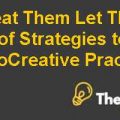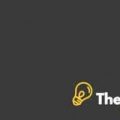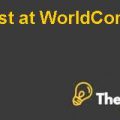CITY FURNITURE & MATTRESS Case Study Solution
Alternative 2
Increased direct and indirect global sourcing
Pros
- It would help in elevating the stress on the manufacturing.
- This will benefit the company by saving its cost.
- It will also help in providing the necessary goods for the retail store, without compromising the profit margins of CFM.
Cons
- However global sourcing will reduce the purchasing cost but it will majorly contribute in increasing the company’s expenses related to storage and inventory management.
- The risk associated with the actual and the perceived demand will increase significantly, increasing the probability of making huge loss.
Alternative 3
Vertical integration
Pros
- It will benefit the company in increasing its profit margin by a significant percentage. Thus, improving the overall profitability of the company.
- It will reduce the dependency of the company over other manufactures, making it more independent.
- It will allow the company to align its production with the market demand, providing an edge over its competitors.
Cons
- Lack of expertise and knowledge about the manufacturing sector is one of the concern that will create hurdle during the process.
- Appointing skilled labor is another critical issue that will be encountered and will restrict the successful implementation.
- To keep the manufacturing profitable company will be required to produce in large quantities that will eventually tie up a sufficient sum of money.
For decision criteria refer to exhibit 2
Recommendation
Singh prior decision to go for vertical integration is so far the best decision for the overall business. Though, the main hurdle he is facing to keep the manufacturing process profitable is his lack of experience. In order to fully enjoy the potential benefits, associated with the vertical integration, Singh needs a better understanding regarding the key operational areas that need to be tackle sensibly. To do this Singh could appoint an experienced manager having suffice knowledge and expertise. As, CFM possess great potentials to generate adequate profits through vertical integration. Moreover, it is essential for the success of the company to eliminate those areas that are no more than a cost to the company. (Exhibit 1)
Exhibits
Exhibit 1: OPTIONS FINANCIAL
| Store Expansion | Year 1 | Year 2 | Year 3 | Year 4 | Year 5 | ||
| Sales | 300,000 | 315,000 | 330,750 | 347,288 | 364,652 | ||
| Cost of Goods Sold | 177,000 | 189,390 | 202,647 | 216,833 | 232,011 | ||
| 123,000 | 125,610 | 128,103 | 130,455 | 132,641 | |||
| Rent | 25,000 | 32,500 | 42,250 | 54,925 | 71,403 | ||
| Advertising | 17,000 | 18,360 | 19,829 | 21,415 | 23,128 | ||
| Selling Expenses/ Wages | 4,800 | 5,280 | 5,808 | 6,389 | 7,028 | ||
| Utilities | 3,000 | 3,210 | 3,435 | 3,675 | 3,932 | ||
| Added Delivery Expense | 4,300 | 4,601 | 4,923 | 5,268 | 5,636 | ||
| Site Set-up Costs | 1,200 | 1,440 | 1,728 | 2,074 | 2,488 | ||
| Miscellaneous | 500 | 535 | 572 | 613 | 655 | ||
| Profit | 67,200 | 59,684 | 49,558 | 36,097 | 18,370 | ||
| Total Profit for 5 years | 230,909 | ||||||
| Additional Costs at start | |||||||
| Truck | 50,000 | ||||||
| Inventory for 1st year | 200,000 | ||||||
| Loss | (19,091) |
| Vertical Integration | Year 1 | Year 2 | Year 3 | Year 4 | Year 5 | ||
| Selling Price | |||||||
| Living room sets | 1,100 | 1,199 | 1,307 | 1,425 | 1,553 | ||
| Mattress Sets : 180 sets | 300 | 327 | 356 | 389 | 423 | ||
| Sales : Average Month Utilizations | |||||||
| Living Room Sets : Number of sets 100 | 110,000 | 119,900 | 130,691 | 142,453 | 155,274 | ||
| Mattress Sets : Number of sets 180 | 54,000 | 58,860 | 64,157 | 69,932 | 76,225 | ||
| Total | 164,000 | 178,760 | 194,848 | 212,385 | 231,499 | ||
| COGS at 35% margin | 106,600 | 116,194 | 126,651 | 138,050 | 150,475 | ||
| 57,400 | 62,566 | 68,197 | 74,335 | 81,025 | |||
| Expenses | |||||||
| Wages/Salary Expense | 5,000 | 5,250 | 5,513 | 5,788 | 6,078 | ||
| Rent | 10,000 | 10,500 | 11,025 | 11,576 | 12,155 | ||
| Utilities | 600 | 630 | 662 | 695 | 729 | ||
| Profit | 41,800 | 46,186 | 50,998 | 56,276 | 62,063 | ||
| Total Profit for 5 years | 257,323 | ||||||
| Costs at startup | |||||||
| Machinery | 70,000 | ||||||
| Raw Materials | 20,000 | ||||||
| Profit | 167,323 | ||||||
Exhibit 2: Decision Criteria
| Factors | Alternative:1 | Alternative:2 | Alternative:3 |
| Cost Leadership | 2 | 2 | 1 |
| Market development | 1 | 1 | 2 |
| Brand awareness | 1 | 1 | 2 |
| Effective market alignment | 1 | 1 | 2 |
| Sales | 2 | 2 | 1 |
| Economies of scale | 1 | 1 | 2 |
| Total | 8 | 8 | 10 |
Exhibit 3 SWOT Analysis
| STRENGTH
· Global exposure · Toronto location. · Wide price range in three product categories. · Owned manufacturing unit. |
WEAKNESS
· Lack of business expertise and knowledge. · Lack of professional staff. · Increasing need of low cost product. |
|
| OPPOTUNUTUES
· Vertical integration · Less chances of dominance by giant retailers. · High demand for low-priced imported goods. |
Critical opportunities
· Vertical integration will provide the company with an opportunity to cater the needs of the customer more rapidly. · Increase number of satisfied customer will increase the loyalty towards the brands, ultimately leading to increase profit margins. · High demand for low price goods can be easily fulfill as the company offers wide range of price. |
Converting weakness into opportunities:
· Eliminate operations and areas that are no longer profitable for the company. · Outsource products that are in high demand from Asian market to offer competitive price. |
| THREAT
· Lack of barriers for new entry. · Increased number of big box stores and local competitors. · Season central market.
|
Contend
· CMF offering wide range price of products will provide the company with a competitive edge. · Though manufacturing, company will have an edge to align its product with the customer need. |
Critical issues
-Low barriers for entry are increasing the threat for the existing business, resulting in less market hold. - the greater number of option available for customer are creating fierce competition on the basis of price, causing less profit margin and loyalty. |













